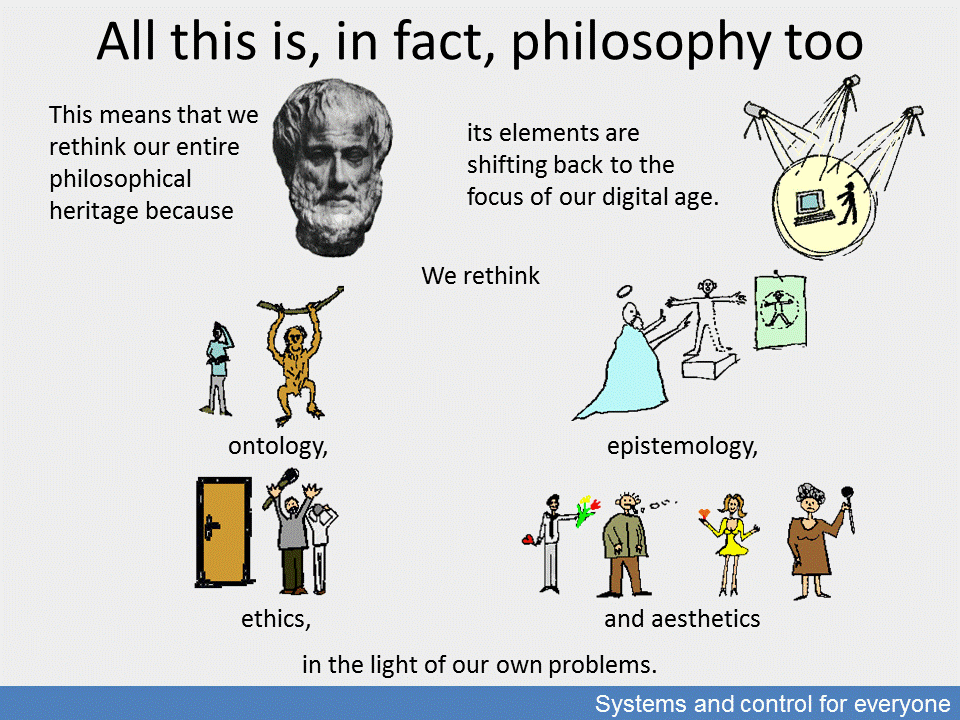

All this is, in fact, philosophy too
Philosophy is how we see our world. This Introduction has also focused on relations and how we see the world from the times of primitive man to our present day, which immediately reveals that the picture we have is both realistic—as it summarises knowledge that is practical for the people of the time—and subject to constant change. What we are doing now is trying to summarise how we see the world today.
As the branches of science became more extensive, they became independent from each other, but the need remained to somehow have the Big Picture. Nearly all prominent representatives of modern sciences started to philosophise in the second half of their lives—and this is not the symptom of senility at all.
In our present day, when the ocean of information floods us nearly every minute with all kinds of novelties, and when we gather information about the world by digesting computer-processed results instead of gaining first-hand experience, we need it more than ever to learn about “ways of seeing” which help us navigate through this information ocean. Traditional “ways of seeing” tell us about existence (ontology), the methods and critique of gaining knowledge (epistemology), right attitude (ethics) and the emotional harmony of things (aesthetics) with varying content but in a way that is useful even today; in fact, they are much more important in our present-day information jungle than they were back in the time of our evoked primitive ancestors.